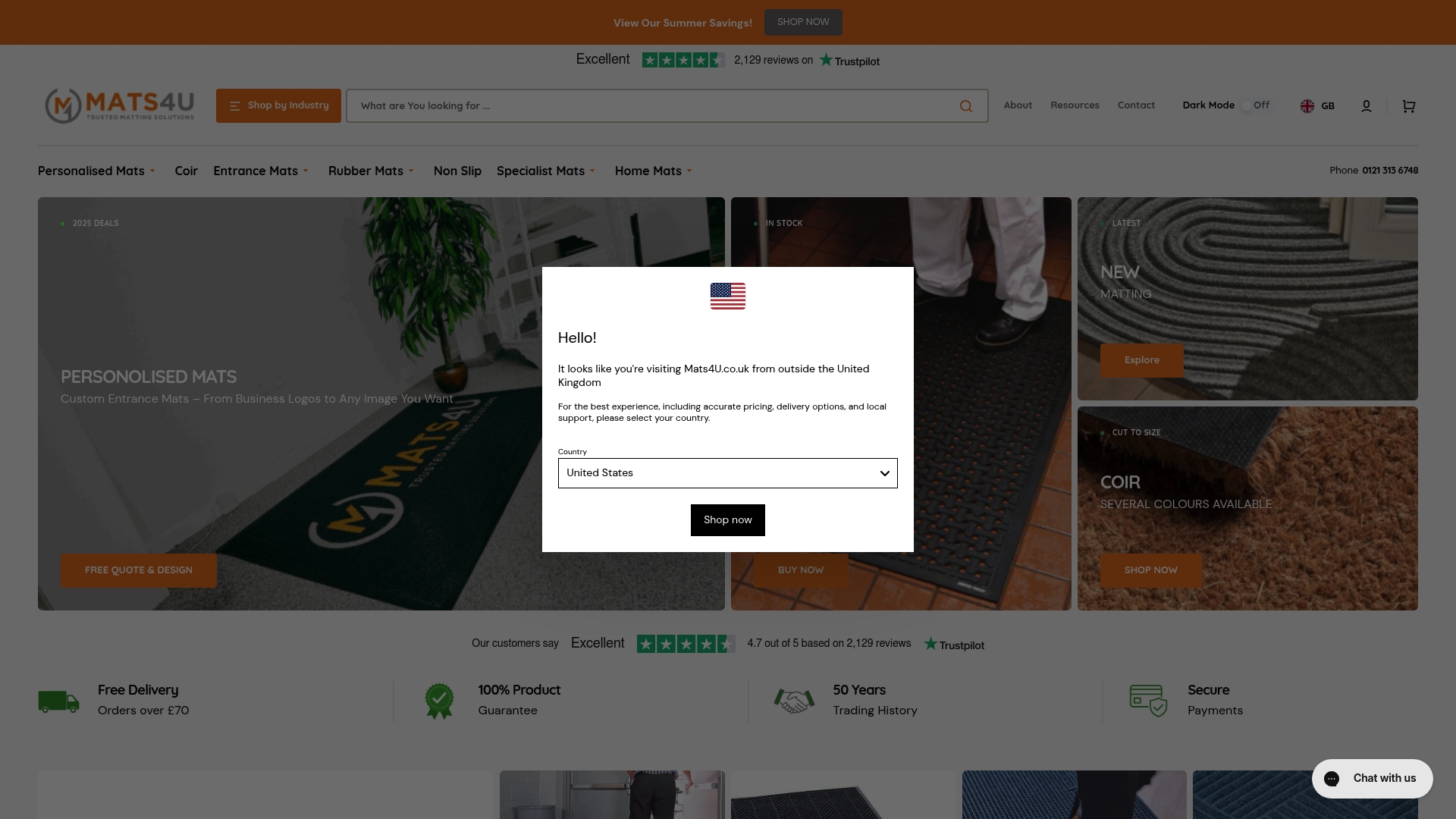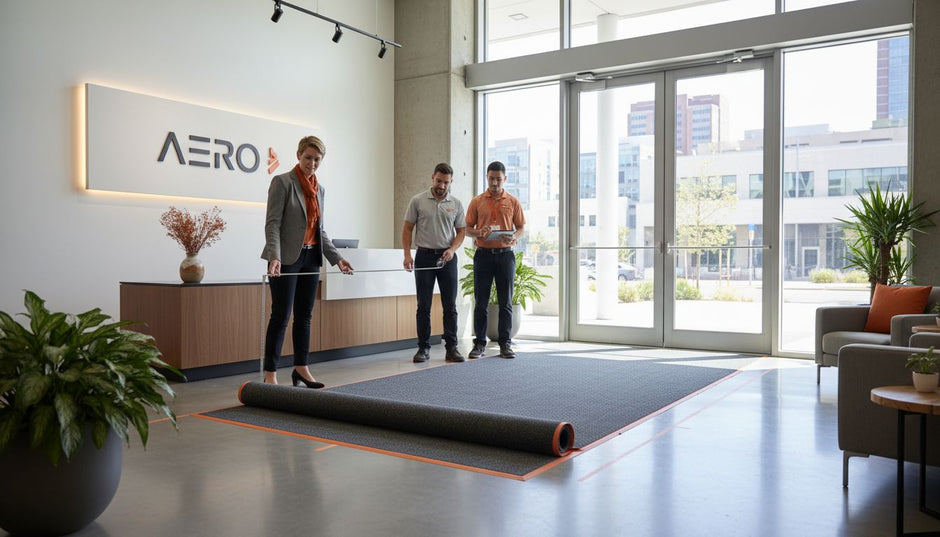Did you know that the UK personalised products market is valued at over £1 billion each year? This growing demand opens the door for entrepreneurs ready to offer unique solutions like custom door mats. Businesses and institutions want products that show their brand and meet practical needs. By understanding who buys these mats and what sets your offer apart, you can build a service that stands out in a busy marketplace.
Table of Contents
- Step 1: Define Your Target Market And Business Goals
- Step 2: Select High-Quality Materials And Suppliers
- Step 3: Design And Brand Personalised Door Mats
- Step 4: Set Up Online Sales And Ordering Systems
- Step 5: Verify Customisation Quality And Fulfil Orders
Quick Summary
| Key Point | Explanation |
|---|---|
| 1. Identify your target market | Determine who is most likely to buy your personalised mats based on industry and demographics. |
| 2. Choose high-quality materials | Select durable and appropriate materials tailored for different environments to ensure functionality and longevity. |
| 3. Develop a strong design strategy | Create unique, branded designs that effectively reflect your business identity and meet customer needs. |
| 4. Establish an efficient online system | Set up a user-friendly e-commerce platform to allow easy customisation and ordering of mats for customers. |
| 5. Implement a quality control process | Ensure all products meet high standards through rigorous verification checks before fulfillment and shipping. |
Step 1: Define your target market and business goals
Launching a personalised door mats business requires strategic thinking about who will buy your products and what you want to achieve. According to research from Money.co.uk, a target market represents the specific group of customers most likely to purchase your mats based on shared characteristics.
Start by identifying the key demographics and industries that might need your personalised mats. In the UK, this could include businesses like offices, schools, retail centres, hospitality venues, and industrial facilities. Each sector has unique matting requirements that present distinct opportunities.
Here’s a comparison of key requirements for common target markets:
| Market Sector | Typical Mat Requirements | Branding Potential |
|---|---|---|
| Offices | Logo mats Entrance mats |
High – Custom logos & colours |
| Schools | Durable Easy to clean |
Medium – School crests |
| Retail Centres | Large size Slip resistance |
High – Brand promotions |
| Hospitality Venues | Absorbent Elegant designs |
High – Thematic branding |
| Industrial Facilities | Heavy-duty Oil resistant |
Low – Focus on durability |
To define your business goals, consider what makes your mat business unique. Will you focus on high quality custom logo mats for corporate clients? Specialise in durable entrance matting for high traffic areas? According to Startup Loans UK, articulating your business purpose through a clear mission statement helps guide your strategic decisions.
Your goals might include targets like:
- Securing 15 corporate clients within the first six months
- Developing a strong reputation for custom branding solutions
- Generating £50,000 in revenue by year end
Pro Tip: Research your local business ecosystem thoroughly. Understanding regional commercial needs will help you tailor your offerings more precisely.
With clear market understanding and defined objectives, you are now ready to develop a strategic business plan for your personalised door mats venture.
Step 2: Select high-quality materials and suppliers
Choosing the right materials and suppliers is crucial for building a successful personalised door mats business. According to research from Europages, verifying supplier credentials through international certifications like ISO 9001 and ISO 14001 helps ensure high quality and sustainable production processes.
Consider the specific requirements of different environments when selecting mat materials. As Mats4u notes, outdoor mats demand robust materials like rubber that can withstand weather variations, while indoor mats benefit from water-absorbent fabrics that enhance functionality and appearance.
When evaluating potential suppliers, look beyond price and prioritise those demonstrating:
- Consistent quality control procedures
- Ability to produce made-to-measure custom designs
- Proven track record in commercial matting solutions
- Flexible production capabilities
- Competitive pricing for bulk orders
Pro Tip: Request material samples and conduct thorough testing before committing to large production runs. This helps validate quality and performance standards.
By carefully selecting high-quality materials and reliable suppliers, you establish a strong foundation for delivering exceptional personalised door mats that meet diverse business needs.

Step 3: Design and brand personalised door mats
Creating stunning personalised door mats requires thoughtful design and strategic branding that captures your business identity. According to Adobe Express, effective branding differentiates your business and builds lasting customer loyalty by developing a unique visual identity that resonates with your target market.
Start by understanding the specific requirements for mat design. Create Custom Logo Mats to Enhance Your Brand Visibility highlights the importance of considering placement and material when designing mats for different environments. Your design should balance aesthetic appeal with practical functionality.
When developing your mat designs, focus on:
- Incorporating your company logo prominently
- Selecting colour schemes that reflect your brand
- Ensuring design clarity and readability
- Matching mat materials to intended usage areas
- Creating designs that withstand regular foot traffic
As recommended by Mats4u, made-to-measure custom logo mats allow for precise branding representation across various commercial and industrial settings. This approach ensures your mats not only look professional but also communicate your brand story effectively.
Pro Tip: Always request digital proofs and physical samples before final production to verify design quality and brand representation.
With a compelling design strategy, you are now prepared to transform your personalised door mats into powerful branding tools that make a lasting impression.
Step 4: Set up online sales and ordering systems
Launching an effective online sales platform is crucial for reaching customers and streamlining your personalised door mats business. According to Adobe Express, establishing a user-friendly website with robust e-commerce capabilities is essential for expanding your market reach and driving sales.
Start by selecting an e-commerce platform that supports custom product configurations. You will need a system that can handle made-to-measure mat designs, allowing customers to personalise their orders with logos, colours, and specific dimensions. Maximise Your Brand Visibility with Branded Mats emphasises the importance of creating a seamless online ordering experience.
Key considerations for your online sales system include:
- Secure payment gateway integration
- High-quality product image displays
- Clear pricing and customisation options
- Simple navigation for mat design interfaces
- Mobile responsive design
- Quick load times
As recommended by HSBC business insights, understanding your target markets online behaviour will help you design an ordering system that meets their specific needs. This means creating intuitive interfaces that make designing and purchasing personalised mats straightforward and enjoyable.
Pro Tip: Implement a preview feature that allows customers to see real-time design changes before completing their purchase.
With a robust online sales system in place, you are ready to transform digital interactions into tangible branded mat solutions.
Step 5: Verify customisation quality and fulfil orders
Ensuring impeccable quality and efficient order fulfillment is the cornerstone of a successful personalised door mats business. According to research from Europages, implementing rigorous quality control measures is essential for maintaining high production standards and customer satisfaction.
Begin by establishing a comprehensive quality verification process. Front Door Mat Cut to Size: A Custom Fit Guide for Businesses emphasises the importance of precision in creating made-to-measure custom mats. Your quality verification should include detailed checks at multiple stages of production.
Key steps in your quality verification process include:
- Reviewing digital proofs before production
- Checking material consistency and colour accuracy
- Verifying logo placement and branding elements
- Measuring exact dimensions and cut specifications
- Inspecting final product for manufacturing defects
- Testing material durability and performance
As recommended by Mats4u, accurate representation of branding elements requires meticulous attention to detail. This means ensuring that every custom mat meets your brand’s quality standards before shipping to the customer.
Pro Tip: Develop a standardised quality control checklist that can be consistently applied across all production batches.
With a robust quality verification system in place, you are prepared to deliver exceptional personalised door mats that exceed customer expectations.
Elevate Your Brand with Customised Entrance Mats from Mats4U
Launching a personalised door mats business comes with challenges like selecting quality materials, perfecting your designs, and ensuring every order matches your brand standards. You want mats that not only protect your floors but also tell your brand’s story clearly and professionally. At Mats4U, we understand these needs providing a wide selection of made-to-measure options designed for precise branding impact and durability.
Explore our Indoor Entrance Mats | Interior Door Mats | Free UK Delivery | Mats4U category where every mat can be personalised to suit your company colours, logos, and specific size requirements. Whether you serve corporate offices, retail spaces or hospitality venues, our quality materials and expert craftsmanship ensure your mats impress from the very first step.

Take the next step in launching your successful personalised door mats business by choosing custom solutions that reflect your vision perfectly. Visit Mats4U today to start designing mats that combine style, functionality and brand recognition with ease. Discover how our complete flooring solutions make ordering straightforward and elevate your commercial spaces instantly.
Frequently Asked Questions
How do I determine my target market for a personalised door mats business?
To determine your target market, identify key demographics and industries that are most likely to need personalised door mats. Focus on sectors such as offices, schools, and retail outlets, and assess their specific matting requirements to tailor your offerings effectively.
What materials should I use for high-quality personalised door mats?
Choose robust materials suitable for the intended environment, like rubber for outdoor use and water-absorbent fabrics for indoors. Research and request samples from suppliers to ensure the quality and durability match your business standards.
How can I effectively brand my personalised door mats?
Effective branding involves prominently incorporating your logo, choosing complementary color schemes, and ensuring design clarity. Develop your designs to reflect your brand’s identity and communicate your values clearly to customers.
What steps should I take to set up an online sales system for my door mats?
Select an e-commerce platform that allows for custom product configurations and supports secure payment gateways. Focus on creating a user-friendly interface with clear pricing and customisation options to enhance the customer experience.
How do I ensure quality control in my personalised door mats production?
Establish a comprehensive quality verification process that includes checks at various production stages. Use a standardised quality control checklist to ensure every product meets your specifications before shipping.
What business goals should I set for my personalised door mats venture?
Set clear, measurable business goals tailored to your vision, such as securing a specific number of clients within a designated timeframe or achieving a revenue target. For example, aim to generate £50,000 in revenue by the end of your first year.









